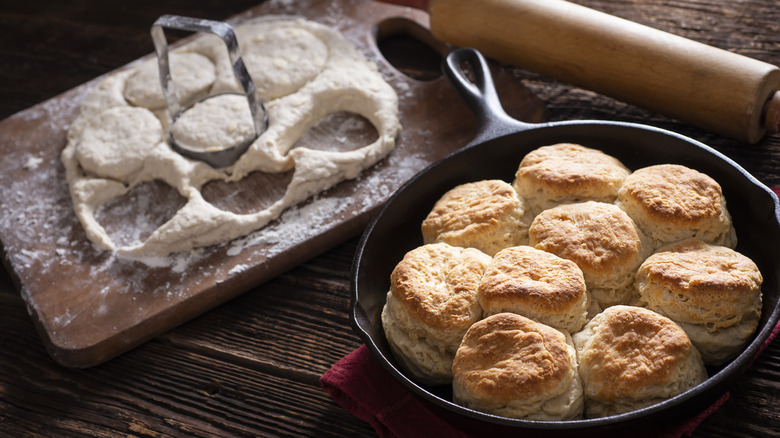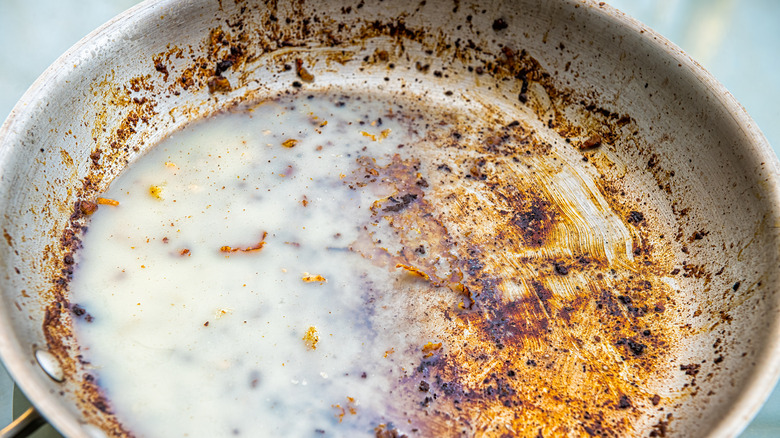Brush Biscuits With Bacon Grease For An Unbelievable Savory Upgrade
Any Southern cook knows the value of bacon grease in home cooking, and there's a good chance it holds sway in professional kitchens as well. With modern healthy eating habits, it may be a bit more tempered than in the past, but you can bet you're tasting tinges of it in many Deep South dishes. That means everything from black-eyed peas and summer squash to warm salad dressings, granny's fried chicken –– and definitely in homemade biscuits.
However, using bacon grease when making biscuits isn't exactly how you'd imagine. For most folks, it doesn't mean plopping a dab of grease into the biscuit batter, but instead using it sparingly on the outside. That means lightly brushing the tops of biscuits with bacon grease, also known as bacon drippings or bacon fat, before popping them in the oven. It's not much different than brushing Italian breads with olive oil or French breads with butter.
The high heat of an oven gives the bacon-greased biscuit tops a crispy texture, earthy brown coloration, and, even more importantly, a touch of smoky, salty, and savory flavor that can't be replicated with any other lard-based cooking fat. It works with any Southern biscuits recipe, and the flavor can be subtle or in-your-face, depending on how heavy-handed you are with the brush. And yes, some people do actually slip a little, or a lot, of the bacon grease into the biscuit batter for extra depth and layered flavor profiles.
Know this before giving your biscuits a savory bacon-grease upgrade
Before embracing bacon-grease mania in the kitchen, there are a few things to know, particularly when brushing it onto biscuits. Like butter and vegetable shortening, bacon grease is a saturated fat and presents in solid form when cool. Since it's an animal fat, it separates from the bacon meat and begins to solidify when it cools to lower than 100 degrees Fahrenheit. But it also tends to have floaty bits of lingering bacon residue trapped inside the solidified lard, which can overwhelm the taste of your biscuits.
Filtering bacon grease before using it in cooking, especially baking, ensures a pure, smoky flavor that's subtle and deliciously savory. It also ensures a longer shelf life for future use. Old-time practices in the South found a pot of bacon grease on many a stovetop or kitchen counter, but it's safer to keep filtered bacon grease inside the refrigerator. If properly stored in a lidded glass container, it will generally last for up to six months — ready and waiting to crown the tops of your fluffy homemade biscuits.
Even better, freeze little scoops of bacon grease in ice trays or freezer-safe molds, then transfer to freezer-safe bags or containers for up to a year, granting easy grabbing on biscuit mornings. And don't be stingy; pop out a pod of frozen or refrigerated bacon drippings for unexpected pleasures like — bacon-flavored popcorn? Smoky bacon-infused bourbon? Never say never.

